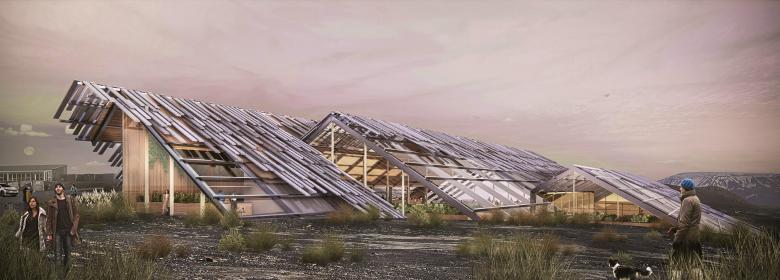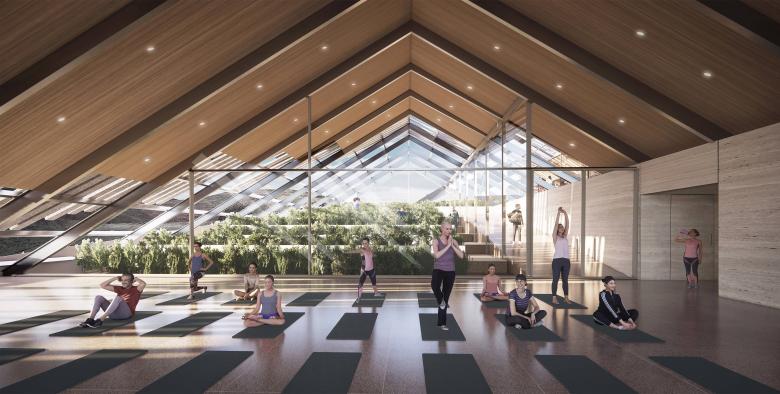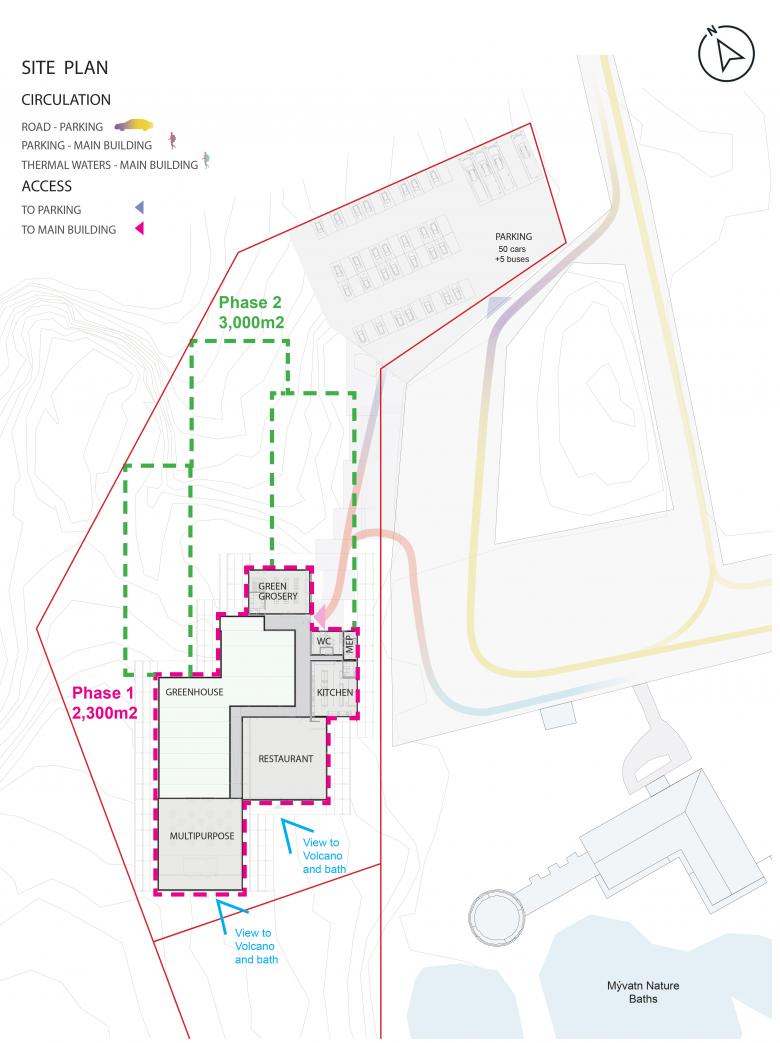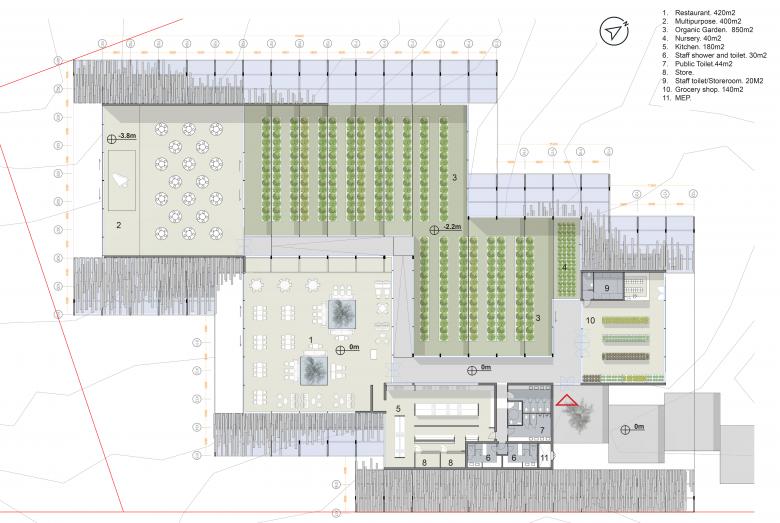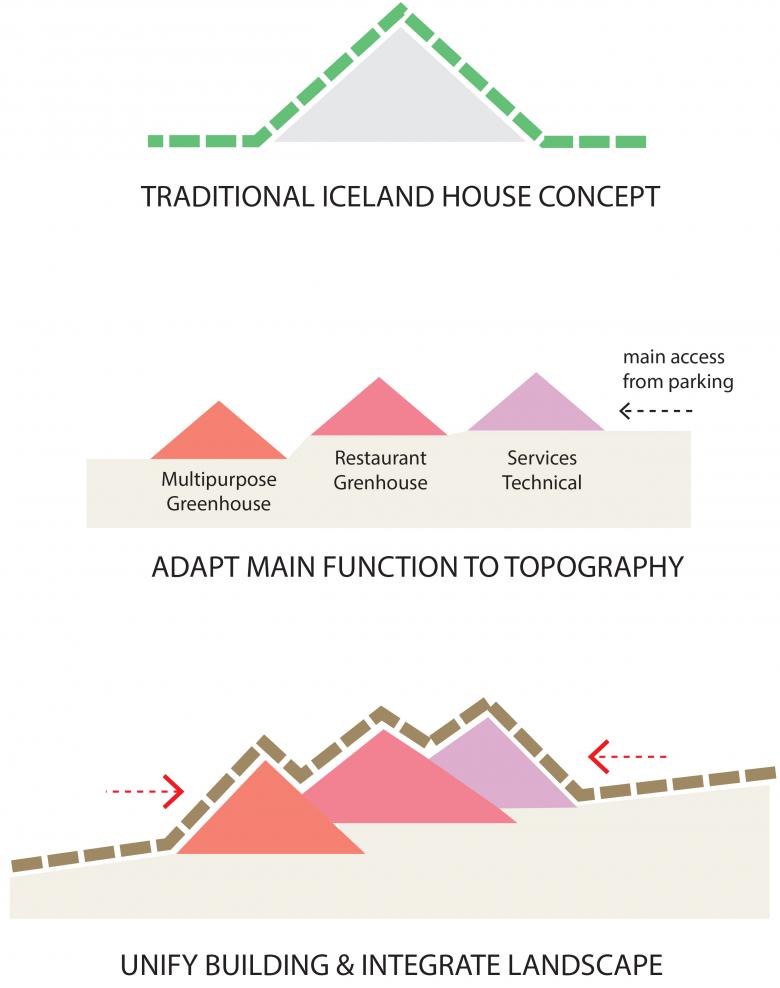Winner — Iceland Greenhouse Restaurant Competition
The Hill Farm
Buildner (formerly Bee Breeders) recently announced the winner of the Iceland Greenhouse Restaurant competition, awarding the first-place prize to architects Derin Kinacigil and Juan Franco for their Hill Farm submission. The project is located near Lake Mývatn in Iceland.
For this competition, participants were tasked with designing a greenhouse concept restaurant. With fresh, locally grown foods scarce in Iceland, particularly during the winter months, this competition called for submissions to design a greenhouse that would also function as a dine-in restaurant. Such a greenhouse would allow Vogafjós Farm to grow salad vegetables, fruits, and berries that could then be served, offering the guests an immersive experience as well as locally produced food.
The Hill Farm project is inspired by the spectacular natural volcanic landscape of the site, which aims to blend succinctly with the slopping topography. The idea was that the building should flow gently, stepping with the landscape while providing a striking iconic design that forms a unique backdrop to its stunning location.
Research into the local architectural design style of Iceland led us to discover the charming designs of the traditional Icelandic Turf house, whereby the buildings respond to the harsh climate using site specific materials to cover the roofs with highly insulated materials. These buildings blend into their landscape beautifully, and therefore Hill Farm adopted this concept, whereby the dynamic building mass forms a slopped hill that is cleverly wrapped in the same stone material as the ground it rests upon. The building's distinct triangular stepping roof form is a direct expression of the site’s volcanic mountains and hill-like topography. The dynamic massing of the buildings in three simple stepping volumes gently touches the ground and appears to gracefully emerge from the landscape, flowing and respecting its changing levels.
To resolve the program of the brief we developed a solution incorporating two principles. The first was to create building volumes that blend within the landscape. The second was to compartmentalize the program into three clearly defined sectors, located on the site in their best logistical location.
Three triangular volumes create three separate zones, one for the multifunction space, one for the restaurant and one for the service, and food preparation areas, which is positioned towards the eastern road for efficient maintenance and service access. The three functional building volumes are then unified and interconnected within one undulating stone roof, creating connectivity between the separate functions. All three of these zones are also brought together by a large central organic farm greenhouse. The organic greenhouse is fully glazed and visible throughout the building, offering views to guests of vegetable harvesting.
The overall design is developed with a special consideration to buildability and sustainable use of materials, which are deeply rooted to the local context of the site. We decided to use biodegradable and recycled materials, such as reclaimed steel, wood and local stone.
The main feature of the building is the stone Basalt roof tiles. The linear roof tiles are arranged in a layered configuration, mimicking that of Icelandic volcanic rock formations. We were inspired by these intriguing rock formations, due to their roughness and dynamic appearance. We felt that reflecting these rock formations on the roof of the building will enhance the overall narrative that this building is at one with its environment — and even carved from it. The stone tiles act as a roof screen, whereby they gradually become more or less dense, according to the building's internal function.
The primary structure of the building will be reclaimed steel, ideal for the harsh climate of the site, as steel is robust, light, and extremely strong, and an excellent framing material for the humid and damp conditions of an organic greenhouse. The internal soffit panels and ceiling of the building will be Birch wood local to Iceland, placed in the dry areas of the program such as the restaurant and multipurpose areas; this is to help create a more natural warm feeling to the building interior. Iceland gray stacked stone panels for the flooring feature a slivery gray natural travertine with a split face, adding character and depth.
The Hill Farm has a prefabricated structural system that uses recycled or reclaimed standard steel sections constructed to regular modular components. The structural frame of the project could be constructed off-site and assembled in manageable units delivered by trucks. Steel is a highly durable material, appropriate for such harsh conditions, and is flexible, cost-efficient, and fast to construct. Recycled steel is also very sustainable, and has no downgrading in its quality. Using existing steel omits any new carbon emissions required for new production of the framing material.
The fundamental triangular geometry of the building form also has inherent benefits. A triangular structure is inherently strong, forming a natural truss as live and dead loads are evenly distributed down towards the ground. The geometry also provides a natural solution for roof drainage and rainwater collection, as water runs of the two sloping sides of the structure.
Sustainability is fundamental to the design of the Hill Farm project and considered from the early concept of the project. We think that architecture should be designed in the most passive way possible, through the careful choice of low-impact materials, and prefabrication construction methods to minimize waste and optimize life cycle cost.
Designing in an ecological friendly way helps us to design smarter, using new technologies to ensure that new development generate minimal harmful effects to the ecosystem and the communities. The design takes advantage of the volcanic conditions of the site utilizing underground hot spring water as a source for natural water supply to the restaurant. Rainwater collection is supported by the triangular form of the building, whereby the rainwater tank collect water used to irrigate the organic vegetable garden. The building also contains solar panels on the southwest of the roof, that help to generate passive electricity for the building.

